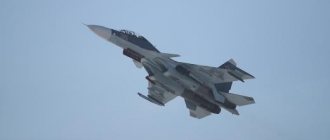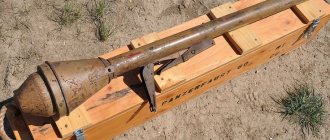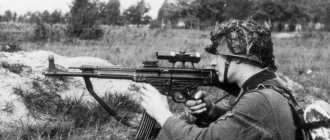Airship - this is how the German word Luftschiffbau was literally translated, which the German Count Ferdinand von Zeppelin called his first rigid airship, which opened the real era of aeronautics. In English, by the way, an airship is designated by the word airship, which literally in Russian means the same “airship.” Subsequently, the name of the designer himself became a household name, and in Russian “zeppelin” is now almost a complete synonym for the French word “airship”, just like “jacuzzi”, for example, means a bath with hydromassage, no longer associated with the person’s surname.
Ferdinand von Zeppelin. Photo: Public Domain
Count Zeppelin, however, was by no means a pioneer in airship construction - three years before him, another German aeronautics pioneer had already launched an airship with a rigid structure. And a couple of decades earlier, the French began to develop airship construction. True, the design of their ships was radically different from what Zeppelin proposed.
Aeronautics fanatic
For the first time, the idea of the possibility of traveling through the air using a huge sphere with a rigid frame, the various compartments of which are filled with gas, was expressed by a retired German army general, Zeppelin, back in 1874, making a corresponding entry in his diary. Then, however, he was primarily attracted by the opportunity to use airships for military purposes.
He also focused on military needs later, sending endless letters to the top officials of the state. Those, consulting with other military men, each time refused the enthusiast. Another would probably just give up and give up. But Zeppelin was not like that. He began work on his first “airship” with his own money.
He did not give up even after the first tests, which showed that the inventor’s calculations underestimated the air resistance and interference that an ordinary breeze can introduce into the movement of an airship. Zeppelin did not give up here either - he began to besiege the leading design bureaus with orders for more and more powerful engines that could compensate for the effects of air.
Gradually, seeing his first successes, the government began to show interest in the development of the graph. He was even given meager grants, which, however, still could not be compared with the amounts allocated for the construction of airships by the inventor himself.
As a result, Zeppelin proved his case on July 2, 1900, demonstrating the first successful flight of the airship LZ-1 (Zeppelin Airship - 1).
Zeppelin Airship 1. Photo: Public Domain
Airships in pre-revolutionary Russia
The first airship in Russia appeared in 1909. But this is not our own development. The ship "Swan" was ordered in France. The poetic name has no reference to swans. It arose from the name of the manufacturing plant Lebaudy. And at the factory the airship was initially given the name La Russie. The author of the design is Henri Julio.
View this post on Instagram
A post shared by Victor Ray (@v1cr4v)
Photo: Airship “Swan”
Description of the airship:
- type – semi-rigid;
- volume – 3700 cubic meters. m;
- length – 61.4 m;
- diameter – 11.4 m;
- payload – 920 kg;
- speed – 36 km/h;
- number of passengers – up to 7 people.
The first airship built in Russia was named “Krechet”. This happened in 1909, and in 1910 the Krechet made its first flight. The prototype for the Russian airship was the French Patry.
Characteristics of the airship:
- type – semi-rigid;
- volume – 6000 cubic meters. m;
- length – 70 m;
- diameter – 11.4 m;
- payload – 2000 kg;
- speed – 43 km/h;
- number of passengers – up to 8 people.
Russia purchased the first airships from England, France, and Germany. Among them there are record holders. So, in 1911, the smallest airship in the world, the Forsman, was purchased from Sweden. Length – 36 m. Volume – 800 cubic meters. m. Miniature models were going to be used as reconnaissance vehicles.
I would like to go to heaven
Zeppelin's first airship spent about 20 minutes in the air and, with the help of two engines made by , managed to reach a speed of just over 21 kilometers per hour. He flew over the lake, making a fairly hard landing, which led to minor damage.
The Zeppelin’s “injuries” were quickly repaired in order to soon carry out several more test flights. However, the airship did not make a positive impression on the military, and they refused to continue to sponsor the count’s project.
Question answer
How have aircraft changed in 230 years?
But a dream is a dream. Zeppelin decides to improve his first model. To do this, he mortgages his estate, his wife’s jewelry and some other expensive things. All possible assistance is provided by the developer’s friends and the founder of the Daimler company, who sees prospects in this industry. The German Kaiser also remains on the Count's side. It does not give money directly, but it allows you to earn about 120 thousand marks by approving the state lottery conducted by Zeppelin.
Zeppelin models began to improve and grow not only technically, but also literally. The length of the “belly” of the third airship exceeded 130 meters, and its speed already reached 50 kilometers per hour. All this forced the military to pay attention to the Count’s developments and look at them from a slightly different angle.
As a result, airships were nevertheless recognized as a promising project. The Ministry of Defense allocated money for further development, but also set tough tasks for the designer. So, his new ship had to be able to remain in motion for 24 days. The flight range should not be less than 700 kilometers, and the speed of the vessel should be 65 kilometers per hour. As a result, airships rewrote all aeronautics records. The longest flight took place over 118 hours. The farthest one flew more than 11 thousand kilometers, from Frankfurt am Main to Rio de Janeiro. And the maximum speed that the airship managed to develop was 140 kilometers per hour.
Airship construction in Germany, which took the lead in this industry, began to develop at a rapid pace. Count Zeppelin's developments found their application not only for military purposes. Airships were used for transporting goods, transporting people, and advertising events. The size of airships kept increasing, and their importance increased.
Photo: Public Domain
The impact of the airship boom can only be gauged from the fact that the tallest building in the world at that time, the Empire State Building, was designed so that its huge spire could act as a mooring mast for giant zeppelins. The architects planned that people could be disembarked at the 102nd floor level. True, after the first tests it became clear that the strong wind would not allow passengers to safely descend onto the skyscraper, and the idea was quickly recognized as utopian. But she was, and that already says a lot.
It was the airship that made the first trip around the world by air. Moreover, on this journey the zeppelin (and it was the airship designed by the German count that set off) made only three refueling landings. Airships were the first to fly over the North Pole and many other hard-to-reach natural objects that no one had previously been able to see or photograph from the air.
Airships were actively used during the First World War and often even took part in battles. In some armies, military airships survived until the Second World War, but were practically never used in military operations due to the high degree of their vulnerability associated with navigation difficulties and gigantic size.
Photo: Public Domain
On September 10, 1930, one of the most famous and probably the most successful airship (judging by the number of kilometers traveled and flights completed), the Graf Zeppelin, named after its 90-year-old creator, visited Moscow, which was a significant event for the Soviet Union. capital Cities.
Kaiser's airships against the capital of the British Empire
By the beginning of World War I, the development of aviation did not yet allow us to rely on airplanes to launch attacks on enemy capitals. Anything that was heavier than air flew short and unreliably, and could carry too little payload. Another thing is airships. They were autonomous enough to spend tens of hours in the air, and heavy enough to carry a more or less serious amount of bombs. This meant that using them to attack enemy capitals was only a matter of time.
The role of personality
The Germans had the best situation with airships. The personal factor of Count Ferdinand von Zeppelin played a significant role in this. As a nobleman and retired major general, Zeppelin had the means to found and maintain a firm making rigid airships. But the design and operating methods had not yet been properly developed, and his airships were destroyed one after another. It took a lot of perseverance and courage to continue what sometimes seemed hopeless work. And the stubborn count did not back down - by the beginning of the First World War, Germany had serious experience in building rigid airships.
Another man behind the London raids was naval officer Peter Strasser, appointed commander of the Airship Division in August 1913. If Zeppelin made rigid airships common, Strasser solved the problem of safety. Before him, the airships fell one after another. His very purpose speaks about how bad everything was - after all, Peter himself had absolutely nothing in common with airships. But in one of the latest disasters, almost all experienced officers managed to perish.
Strasser had nothing left to do - he began to study all the reports, manuals and manuals on aeronautics that he could find. He drew up new rules, selected people, fought with the Reichstag for the allocation of funds and forced designers to make changes to airships that had not yet been built. Even the crash of the airship L-2 in October 1913 did not stop him - and this was the last naval zeppelin. Until new ones were built, Strasser rented a passenger airship so his men could continue training. And as a result, he achieved his goal - when the war broke out, the zeppelins stopped falling one after another for purely technical reasons.
London tour
At the same time, Strasser became the main German theorist of strategic bombing. Even before Douai, he spoke about the moral effect of bombing a peaceful city unprepared for war. Unlike the famous Italian, Peter did not think of winning the war with air attacks. In the end, the bomb load of the first airships was small - two or three 50-kg land mines and a dozen or two incendiary bombs of several kilograms each. His goals were more modest, but more realistic. To sow panic among the civilian population, and to achieve a concentration in the rear of people, aircraft and anti-aircraft guns that could be used in the war in Europe.
It was not the first time that the German airships attacking London bombed the enemy capital - back in March 1915 they flew to Paris. But the latter was a bad target - the path to it was blocked by the front line, where there was a high chance of being hit by anti-aircraft guns. In addition, Paris was already saturated with air defense - after all, the planes of that time could fly to it. Which largely rendered air raids meaningless. London, on the contrary, seemed like a tempting target - there was almost nothing covering it, and the path over the sea was relatively safe.
LZ-38 - the first airship to bomb the British capital
Only the Kaiser, who was related to the British royal family, did not give permission for operations against the English capital. But gradually the Germans and the British broke all the pots - after a series of mutual aerial bombings in Europe, by May 1915, Wilhelm II lifted the restrictions. True, it was impossible to bomb the royal palace and some historical buildings, but accurate bombing from a flying airship was impossible in any case, and the bombs still fell where Gott sent them.
The airship LZ-38 was the first to attack London - on May 31, 1915, it dropped 60 high-explosive and 89 incendiary bombs on the British capital. All of them were of relatively small caliber - the LZ-38's payload was slightly less than 13 tons, the vast majority of which was consumed by the crew, supplies, radios, and defensive weapons with ammunition for them. But for London, which was pristine about aerial bombing, it was enough. Moreover, the city neglected the blackout. The losses were relatively small - 42 killed and wounded, but it stirred public opinion. The British began to concentrate more and more aircraft and anti-aircraft guns at home.
British Bulldog vs. "Flying Sausages"
Airship raids on the British capital were gaining momentum. The Germans improved their means. So, in September 1915, they dropped a “colossal bomb” of 300 kilograms on London - at that time it seemed that it had some kind of transcendental destructive power. The British, naturally, were not going to tolerate such experiments on themselves, and were actively developing countermeasures. To combat the Zeppelins, a commission was created, headed by none other than the First Lord of the Admiralty, Winston Churchill.
The future prime minister already showed his famous “bulldog” disposition. Without interfering with organizing the immediate defense of Britain, he insisted on seizing the initiative. The first successful raid by British aviation on airship bases happened back in October 1914 - a Sopwith biplane dropped two 9-kg bombs and destroyed the Z-IX airship. But such attacks were not regular. And in 1915, with the arrival of Churchill, these raids became systematic.
And sometimes they looked like a mixture of a dark tragedy and a French comedy about gendarmes. So, on June 7, 1915, a British pilot flew to bomb Zeppelin bases in the French Morand-Saulnier. But I came across a 160-meter LZ-37, returning from England from a night bombing. Relieved that he no longer had to fly far, the Englishman attacked the airship, dropping six 9-kg bombs. The hydrogen immediately caught fire. Its debris fell not on some wasteland, but on a Belgian convent. Three nuns and the entire crew of the zeppelin were killed. All of them, except for one German, who fell out of the godnola, broke through the flimsy wooden roof of one of the monastery buildings, and managed to land directly in the bed with a sleeping nun.
Fight between fighter and airship
Meanwhile, the British were building up forces on their island, justifying Strasser's idea of pulling back forces. By the end of 1916, there were 12,000 people in England just servicing anti-aircraft guns and searchlights. Airplanes were transferred there - 12 fighter squadrons. Special means were developed - for example, unguided rockets suspended on the wings. The British did not forget about the sea - the 6th anti-aircraft division of light cruisers operated there against airships. To combat the Zeppelins, even some submarines were armed with anti-aircraft guns.
Results
It didn't take much to get the British to divert such a force. By the end of the same 1916, only 215 raids had been carried out on England and some 158 tons of bombs had been dropped - childish numbers by the standards of the next big war. Direct material damage from the bombings was estimated at 1.5 million pounds - a comical sum compared with the cost of the forces deployed against the airships.
Strasser's strategy worked. This, however, did not cancel the general situation on the fronts - Germany, which was inferior to the Entente in resources, was slowly but surely being squeezed. Since the autumn of 1917, the construction of new airships was sharply reduced - the influx was limited to one zeppelin per month. In January 1918, things got even worse - as a result of a major fire at one of the bases, 5 airships died at once. And the fleet is left with only 9 “flying sausages”.
And in August 1918, Strasser himself died on the airship L-70. His last combat mission was also his last flight to England. This charismatic and “punchy” officer was the last thing that held long-distance raids. With the development of aircraft, lighter-than-air vehicles became less and less popular, and with the death of Strasser, the concept of bombing Britain using airships also died. But for strategic bombing in general this was just the beginning.








